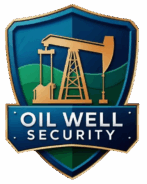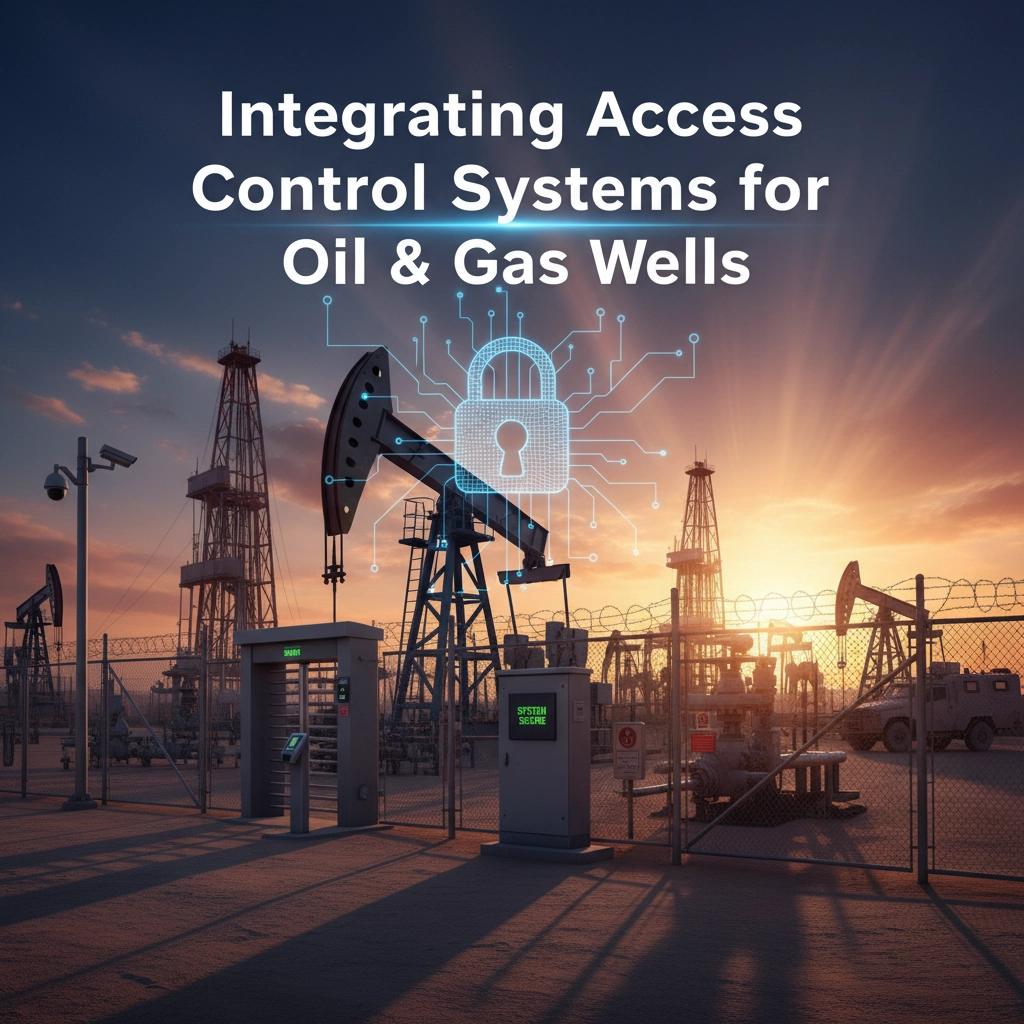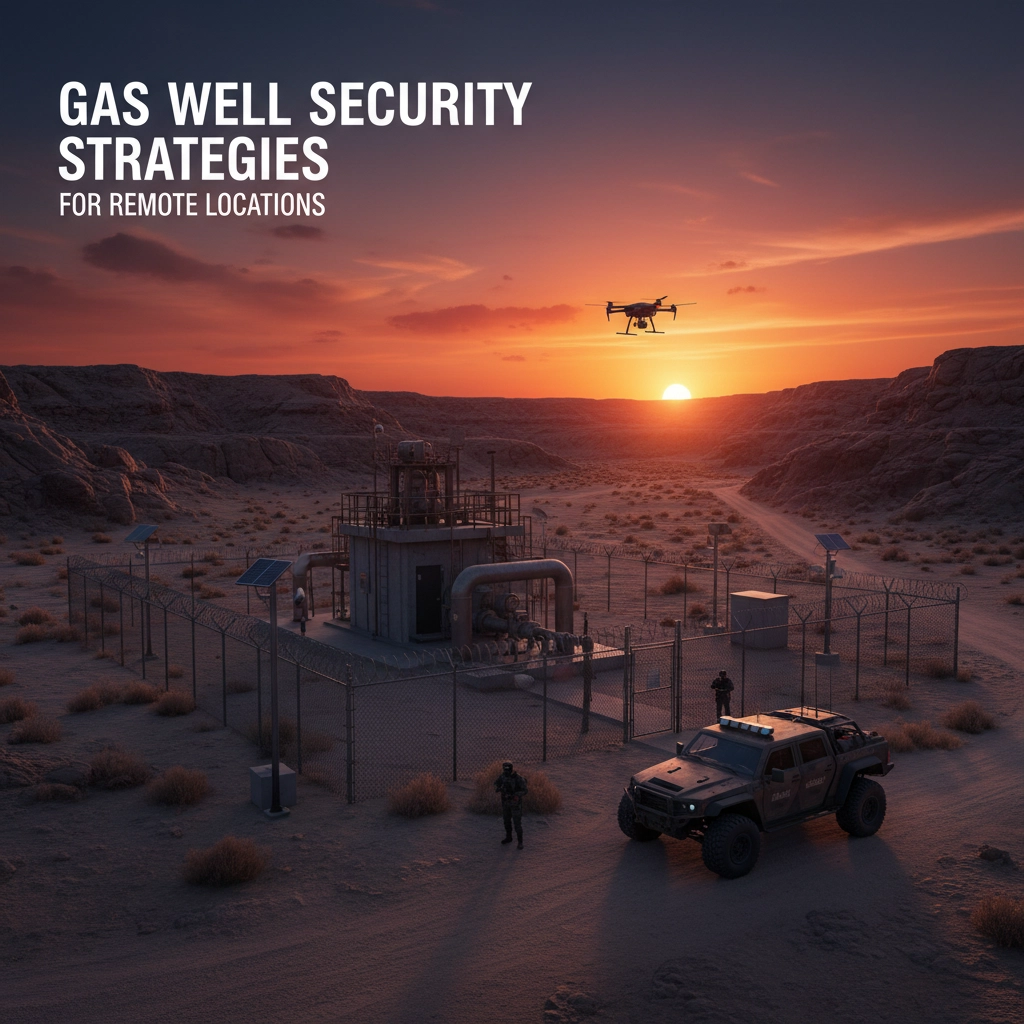Most operators think gas well security is just about locks and cameras… until they see what a single breach can cost their operation.
If you've ever wondered whether your gas well security measures are truly protecting your investment, you need to understand the evolving threat landscape facing today's energy infrastructure. The stakes have never been higher, and the threats have never been more sophisticated.
The Reality Check Your Operation Needs
Your gas wells face a perfect storm of threats that can shut down operations, drain profits, and put lives at risk. From sophisticated cyberattacks targeting your control systems to physical sabotage attempts on remote infrastructure, the security challenges you're dealing with span multiple domains and require comprehensive solutions.
The truth is, 85% of security incidents at energy facilities could have been prevented with proper threat assessment and layered security measures. Here's what you're really up against and how the right security approach makes all the difference.
Physical Threats That Keep Operators Up at Night
Sabotage and Vandalism
Your remote gas wells present attractive targets for saboteurs looking to cause maximum disruption with minimal risk of detection. These threats aren't theoretical: they're happening right now across the industry. Vandals target exposed equipment, while more sophisticated actors aim for critical infrastructure points that can halt production entirely.
The financial impact hits immediately. When saboteurs damaged pipeline infrastructure in recent incidents, operators faced millions in lost revenue while repairs stretched on for weeks. Your remote locations make detection difficult and response times longer, amplifying the damage potential.

Theft of Equipment and Materials
Copper theft alone costs the energy industry hundreds of millions annually, but thieves increasingly target specialized equipment and materials from gas well sites. Your valuable pumps, sensors, and control equipment represent quick cash for organized theft rings who know exactly what to look for and how to remove it efficiently.
The replacement costs extend far beyond the stolen items themselves. You're looking at production downtime, emergency procurement at premium prices, and often the need to upgrade security after the fact: expenses that quickly multiply the initial theft impact.
Cyber Threats Targeting Your Digital Infrastructure
Ransomware and Operational Technology Attacks
Your gas wells increasingly rely on digital systems for monitoring, control, and optimization. This connectivity creates entry points for cybercriminals who understand that energy infrastructure represents high-value targets with strong incentives to pay ransoms quickly.
Recent ransomware attacks on energy companies have demonstrated how quickly cybercriminals can lock operators out of critical systems. When your production monitoring goes down, you're operating blind until systems come back online: if they come back online.
Nation-State Cyber Espionage
The current geopolitical climate has intensified state-sponsored cyber threats against energy infrastructure. Your operational data, production capacity information, and infrastructure details represent valuable intelligence for foreign adversaries seeking to understand and potentially disrupt domestic energy supplies.
These attacks often operate below the detection threshold for months, collecting information and establishing persistent access before operators realize their systems have been compromised. The sophistication level continues escalating as state actors dedicate significant resources to energy sector targeting.

Environmental and Operational Hazards
Explosive Atmosphere Risks
Your gas wells operate in environments where explosive gases and vapors create constant ignition risks. Traditional security equipment can become ignition sources if not properly rated for hazardous atmospheres, creating a dangerous conflict between security needs and safety requirements.
The challenge intensifies in confined spaces where flammable vapors can accumulate rapidly. Security measures must account for these environmental realities while maintaining effectiveness in threat detection and response.
Toxic Gas Exposure Incidents
Hydrogen sulfide and other toxic gases present serious health risks to your personnel and emergency responders. Security incidents that compromise containment systems or create emergency evacuation scenarios can expose people to dangerous concentrations of these gases.
Your security planning must integrate with emergency response procedures to ensure that security measures don't interfere with rapid evacuation when toxic gas releases occur.
How Comprehensive Security Measures Address These Threats
Integrated Physical Security Systems
The most effective approach combines multiple security technologies into unified systems that provide comprehensive coverage. Your perimeter intrusion detection works alongside advanced surveillance cameras, access control systems, and sensor networks to create layered defense mechanisms.
Real-time monitoring capabilities enable immediate threat detection and rapid response coordination. When your security systems integrate properly, they provide operators with complete situational awareness across all facilities, regardless of location or environmental conditions.
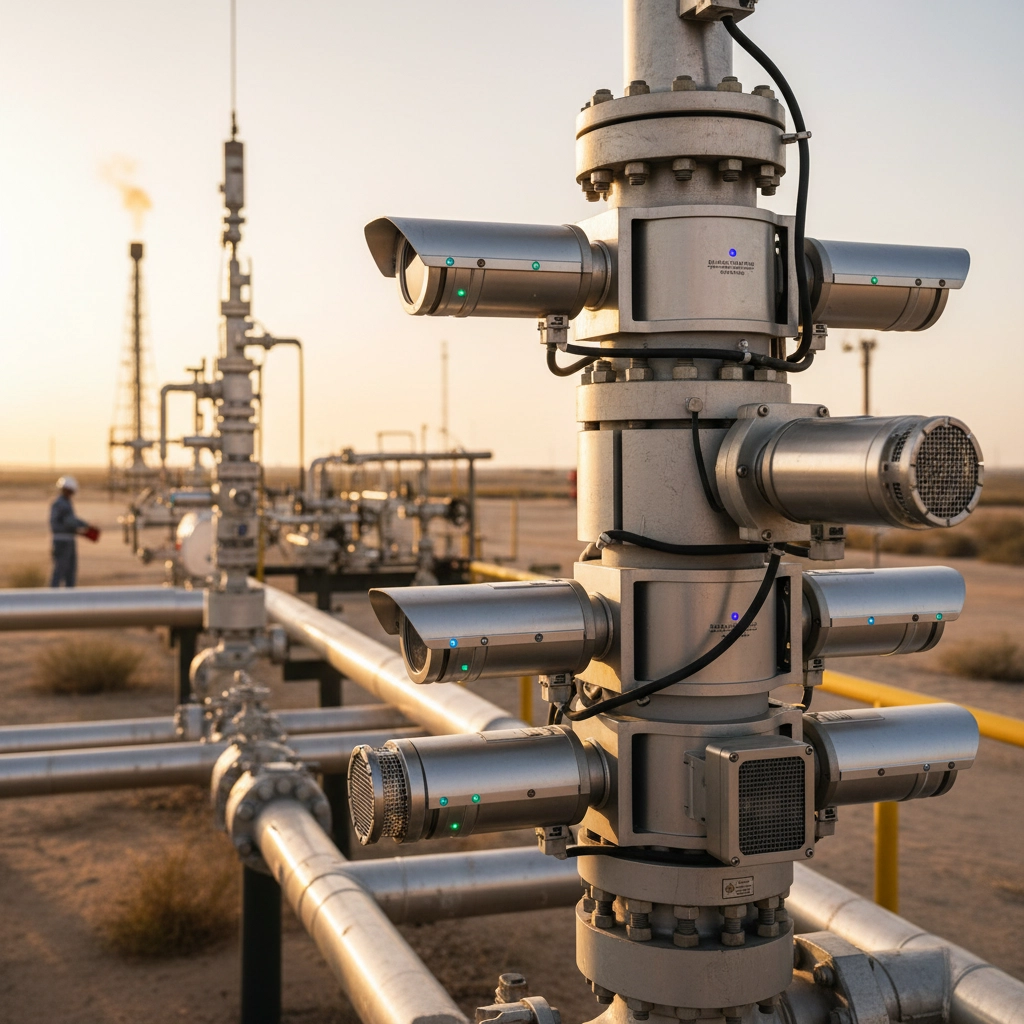
Specialized Equipment for Hazardous Environments
Your gas well security requires intrinsically safe equipment designed specifically for explosive atmospheres. These specialized systems prevent ignition risks while maintaining full security functionality, eliminating the dangerous compromise between safety and security.
Intrinsically safe cameras, sensors, and communication equipment ensure that your security measures enhance rather than compromise operational safety. This equipment meets strict certification standards while providing the reliability you need for continuous monitoring.
Advanced Cybersecurity Protocols
Your digital infrastructure protection requires multi-layered cybersecurity approaches that secure both information technology and operational technology systems. AI-driven analytics identify unusual patterns and potential threats before they compromise critical systems.
Network segmentation isolates critical operational systems from external networks while enabling necessary connectivity for remote monitoring and control. Your cybersecurity measures must evolve continuously as threat actors develop new attack methods.
Proactive Risk Assessment and Mitigation
Comprehensive Threat Analysis
Your security strategy begins with thorough risk assessment that evaluates physical environment factors, operational processes, technological systems, and human elements. This systematic approach identifies vulnerabilities specific to your operations and facilities.
Threat modeling helps you understand how different attack scenarios might unfold and where your current defenses might prove insufficient. The assessment process reveals gaps in coverage and opportunities to strengthen security posture before incidents occur.
Tailored Security Solutions
Your operational challenges require customized security approaches that account for facility locations, production processes, environmental conditions, and regulatory requirements. Generic security solutions often miss critical vulnerabilities or create operational conflicts.
Effective security design integrates seamlessly with your existing operations while providing comprehensive threat coverage. The best solutions enhance operational efficiency while maintaining robust security capabilities.
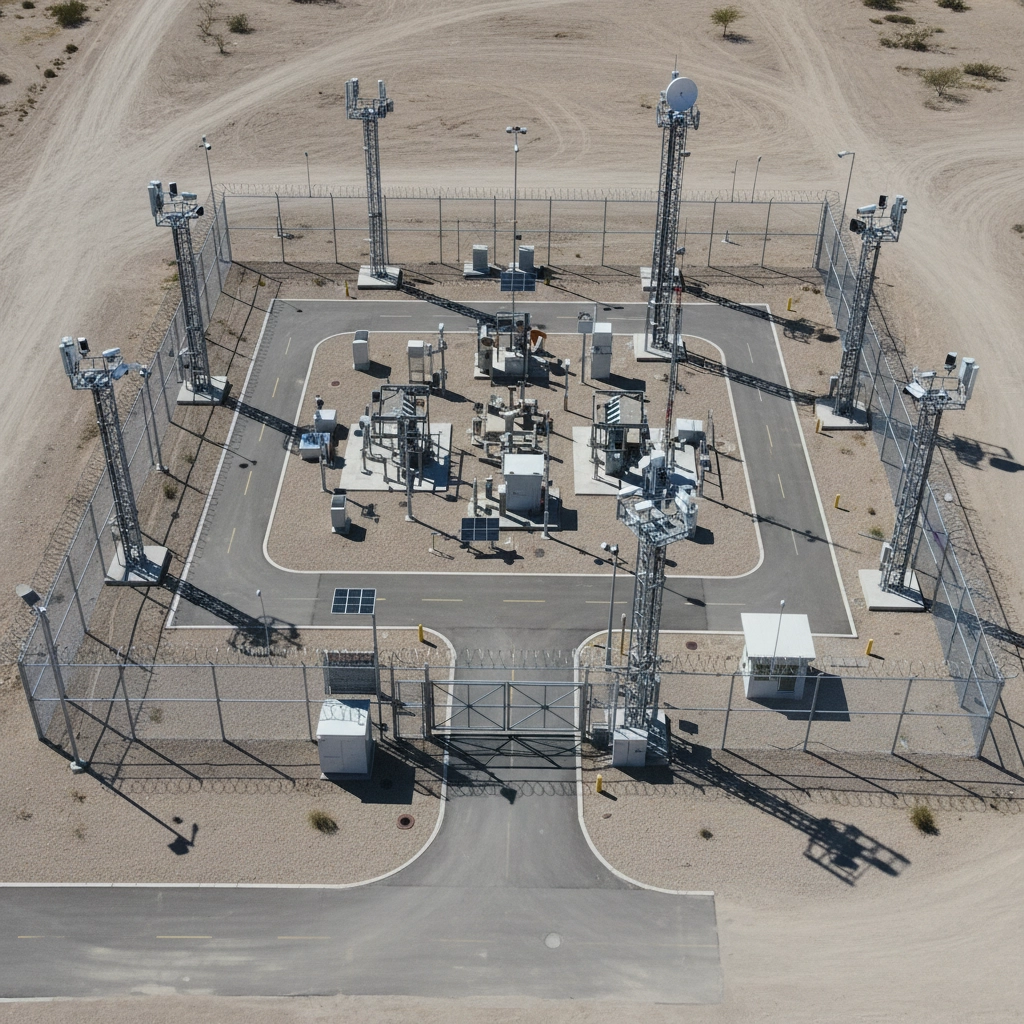
Real-World Impact of Professional Security Measures
Operational Continuity Protection
When properly implemented, comprehensive security measures prevent the production disruptions that cost operators millions in lost revenue. Your security investment pays for itself through maintained operations during threat incidents that shut down unprotected facilities.
Rapid incident detection and response capabilities minimize downtime when security events do occur. The faster your response, the lower your operational and financial impact from security incidents.
Personnel Safety Enhancement
Your security measures protect the safety of field personnel who work in potentially dangerous environments. Integrated security and safety systems provide early warning of both security threats and environmental hazards.
Emergency response coordination improves significantly when security systems integrate with safety protocols and communication networks. Your personnel can respond more effectively to incidents when they have complete situational awareness.
Regulatory Compliance Support
Comprehensive security documentation and monitoring capabilities help you maintain compliance with increasing regulatory requirements for energy infrastructure protection. Your security measures provide the audit trails and incident documentation that regulators expect.
Proactive security management demonstrates due diligence in protecting critical infrastructure, which can influence regulatory decisions and potentially reduce compliance burdens.
Taking Action on Gas Well Security
The threats facing your gas wells will continue evolving and intensifying. Your security measures must stay ahead of these threats through comprehensive planning, proper implementation, and ongoing management.
Don't wait for a security incident to expose vulnerabilities in your current approach. The time to strengthen your gas well security is now, before threats become incidents that cost your operation time, money, and potentially lives.
For expert consultation on gas well security solutions tailored to your specific operational needs, contact Oil Well Security today at info@oilwellsecurity.com or call (970) 465-2525. Our team understands the unique challenges facing gas well operators and can help you develop comprehensive security strategies that protect your infrastructure, personnel, and profits.
